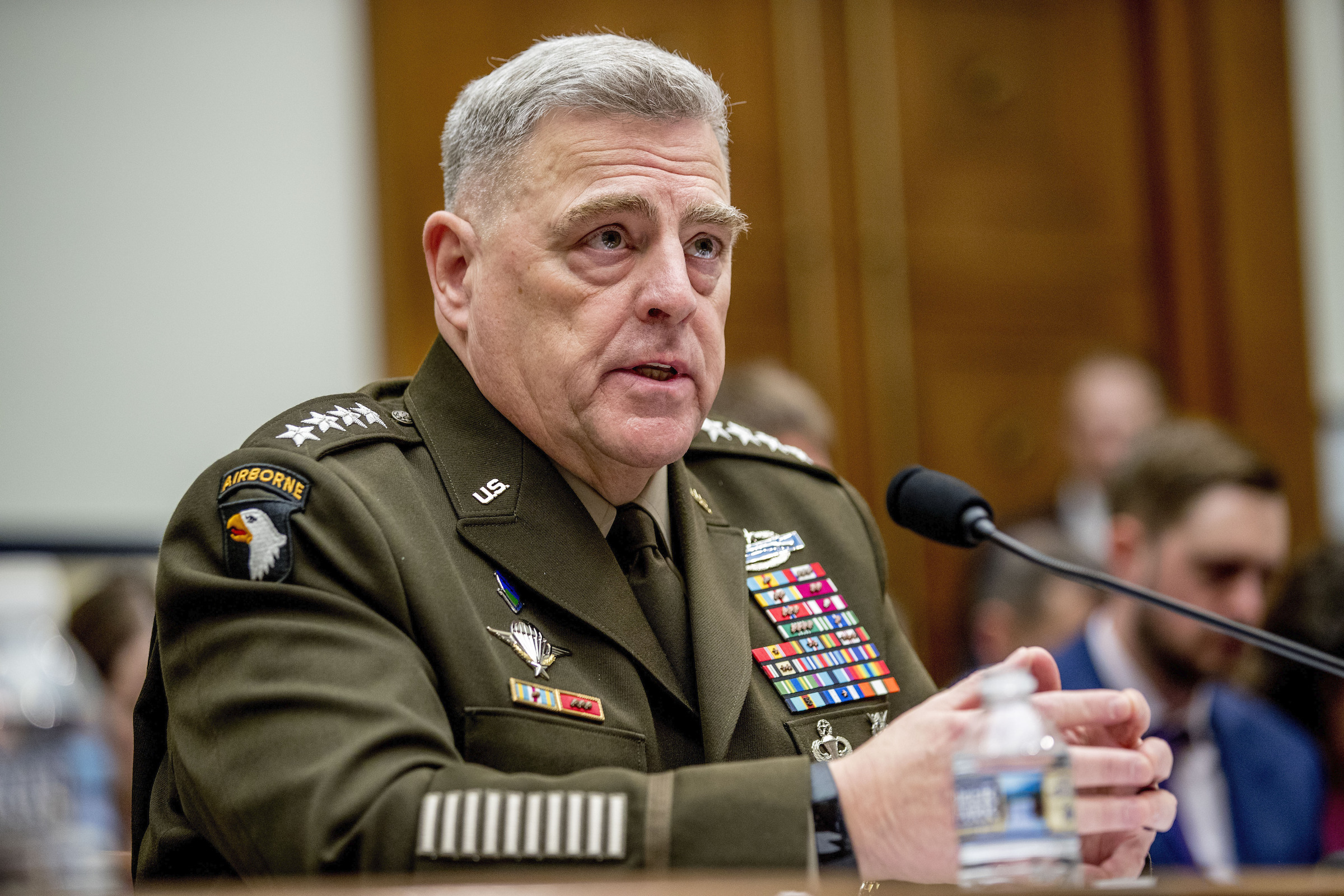
The Taliban is now in control of about half of Afghanistan’s district centers and threatening to take more, the U.S. military’s top officer said Wednesday, as U.S. forces continue toward full withdrawal by Aug. 31. The militants now control more territory in the country than at any time since the U.S. toppled the group from power in 2001 following the September 11 attacks.
“Strategic momentum appears to be sort of with the Taliban,” General Mark Milley, chairman of the Joint Chiefs of Staff, told reporters at the Pentagon. “There clearly is a narrative out there that the Taliban are winning. In fact, they are propagating an inevitable victory on their behalf.”
Milley says the Taliban now control about over 210 of Afghanistan’s 419 district centers—more than twice the number that he said the group controlled just four weeks ago. Milley acknowledged that Taliban have surrounded some of the provincial capitals, but said none have fallen so far. “This is going to be a test now of the will and leadership of the Afghan people, the Afghan security forces and the government of Afghanistan,” he said.
The Taliban’s battlefield gains are indicative of a rapidly deteriorating security situation in Afghanistan that the Biden Administration has worked to downplay since April 14 when the President announced his decision to withdraw all American troops from the country.
Afghan forces have been under siege by Taliban fighters in recent months, particularly after U.S. and NATO forces began the massive logistical challenge of pulling out troops, equipment and heavy weapons from strategic locations they occupied for 20 years. The U.S. military now says it has completed 95% of its withdrawal, meaning that nearly all 2,500 American troops have departed the country. The only exception are security units based at the U.S. embassy and airport in Kabul, the nation’s capital.
The Taliban’s stepped-up violence has stalled peace talks between the militants and the Afghan government. “There’s a possibility of a negotiated outcome that’s still out there,” Milley said. “There’s a possibility of a complete Taliban takeover. There’s a possibility of any number of other scenarios.”
On Tuesday, a salvo of rocket fire landed outside the presidential palace’s heavily fortified grounds in Kabul as President Ashraf Ghani and other government officials held morning prayers to celebrate the start of Eid al-Adha, a Muslim holiday. No injuries were reported.
The U.N. recently reported that more than 50 districts have come under Taliban control since May. Afghan security forces are now consolidating around population centers, Milley said, including Kabul and other provincial capitals. He pointed out that Afghanistan’s 300,000 troops and police, which the U.S. has spent $74 billion to train and equip, vastly outnumbers the estimated 75,000 Taliban fighters. “They have the capacity to sufficiently fight and defend their country,” he said, adding that a Taliban takeover of Afghanistan “is not a foregone conclusion.”
Critics of Biden’s withdrawal plan worry that the central goal of the 2001 U.S. invasion—to root out and dismantle al-Qaeda—could be undermined as the Taliban has allowed remaining operatives of that militant group to continue to plot inside the country. Al-Qaeda has been decimated over the years through U.S. drone strikes and special operations raids, but still poses a “medium risk” to re-emerge within two years, according to Defense Secretary Lloyd Austin, who spoke alongside Milley.
The U.S. military is now establishing “nodes” outside of Afghanistan to continue providing some semblance of security aid to Afghan security forces while also maintaining counterterrorism operations targeting al-Qaeda and other militant groups with a presence inside the country, Austin said. One such node to conduct “over-the-horizon” missions is now operational in Qatar, where the U.S. military has a vast command hub overseeing air operations throughout the Middle East, he said.
“Make no mistake that we remain committed to helping the Afghan security forces and the Afghan government going forward,” Austin said. “We are doing what we said we’re going to do in terms of putting the pieces in place to ensure that we can provide that support.”
The U.S. realizes the withdrawal of international forces could prove disastrous for Afghans who collaborated closely with the U.S. for decades, including interpreters and soldiers, as well as for half the country’s population, Afghan women, who were systematically victimized under the Taliban.
The Biden Administration is currently working to relocate about 9,000 Afghans, both civilian and military, from the county. The Afghans are slated to be housed at military bases both overseas and in the U.S., while they await Special Immigrant Visa approvals. The Pentagon announced the first applicants will briefly stay at Fort Lee, a U.S. Army base in Virginia located about 140 miles south of Washington.
Evacuation flights of what’s being called “Operation Allies Refuge” are set to begin later this month and additional vulnerable Afghans are expected to seek refuge as the violence in their country deepens.
More Must-Reads from TIME
- Inside Elon Musk’s War on Washington
- Meet the 2025 Women of the Year
- The Harsh Truth About Disability Inclusion
- Why Do More Young Adults Have Cancer?
- Colman Domingo Leads With Radical Love
- How to Get Better at Doing Things Alone
- Cecily Strong on Goober the Clown
- Column: The Rise of America’s Broligarchy
Write to W.J. Hennigan at william.hennigan@time.com